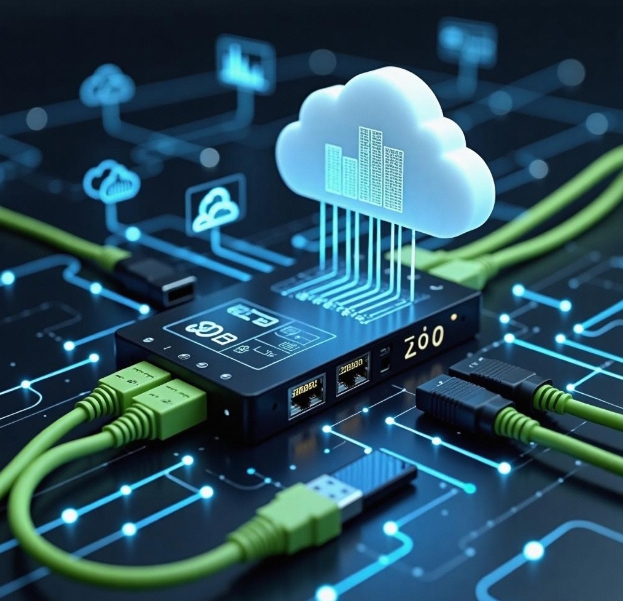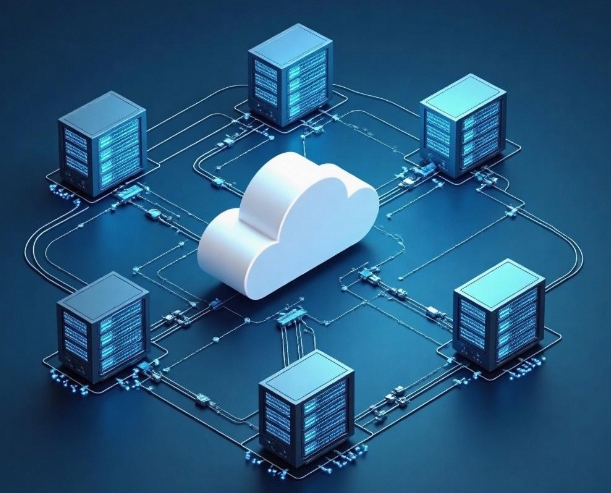Applications and Prospects of Cloud Computing in High-Performance Computing
- latest articles
- 1.DApp Development & Customization: Merging Diverse Market Needs with User Experience 2.Analysis of the Core Technical System in DApp Project Development 3.How to achieve cross-chain interoperability in Web3 projects? 4.How does the tokenization of points reconstruct the e-commerce ecosystem? 5.How to Set and Track Data Metrics for a Points Mall? 6.What is DApp Development? Core Concepts and Technical Analysis 7.Inventory of commonly used Web3 development tools and usage tips 8.Development of a Distribution System Integrated with Social E-commerce 9.Six Key Steps for Businesses to Build a Points Mall System 10.What is DApp Development? A Comprehensive Guide from Concept to Implementation
- Popular Articles
- 1.Future Trends and Technology Predictions for APP Development in 2025 2.Analysis of the DeFi Ecosystem: How Developers Can Participate in Decentralized Finance Innovation 3.From Zero to One: How PI Mall Revolutionizes the Traditional E-commerce Model 4.DAPP Development | Best Practices for Professional Customization and Rapid Launch 5.Recommended by the Web3 developer community: the most noteworthy forums and resources 6.From Cloud Computing to Computing Power Leasing: Building a Flexible and Scalable Computing Resource Platform 7.How to Develop a Successful Douyin Mini Program: Technical Architecture and Best Practices 8.Shared Bike System APP: The Convenient Choice in the Era of Smart Travel 9.How to Create a Successful Dating App: From Needs Analysis to User Experience Design 10.From Design to Development: The Complete Process of Bringing an APP Idea to Life
In recent years, with the rapid development of information technology, cloud computing and high-performance computing (HPC) have gradually become important components in the field of computational science. Cloud computing provides strong support for high-performance computing, especially in terms of resource scheduling, storage, and processing capabilities, driving transformations across many industries. This article will explore the application of cloud computing in high-performance computing and its future prospects, analyze the immense potential brought by their integration, and look ahead to future technological trends.
Basic Concepts of Cloud Computing and High-Performance Computing
Cloud Computing
Cloud computing refers to the service of providing computing resources over the internet, allowing users to dynamically rent servers, storage, databases, applications, and other resources as needed without owning physical hardware. The core characteristics of cloud computing include elasticity, scalability, pay-as-you-go pricing, and automated management, making the acquisition of computing resources more flexible and convenient.
High-Performance Computing
High-Performance Computing (HPC) refers to the use of supercomputers or computing clusters to solve complex computational tasks that traditional computing methods cannot efficiently handle through parallel computing. HPC is widely applied in fields such as weather forecasting, life sciences, financial modeling, and engineering design. The core requirement of high-performance computing is the powerful performance of computing resources, especially for processing massive data and executing complex algorithms.
Applications of Cloud Computing in High-Performance Computing
With the maturity of cloud computing technology, an increasing number of high-performance computing tasks can be executed on cloud platforms. Cloud computing provides HPC with abundant resources and flexible computing capabilities, thereby changing the traditional application model of high-performance computing. Below are some of the main application areas of cloud computing in high-performance computing.
1. Provision of Elastic Computing Resources
Traditional high-performance computing often relies on expensive supercomputers or dedicated clusters. These devices typically require long-term substantial investment and underutilize resources during low-load periods. Cloud computing provides elastic computing resources through virtualization technology, allowing users to scale computing capacity up or down as needed. This feature makes high-performance computing more cost-effective, especially suitable for small and medium-sized enterprises and research institutions.
On cloud computing platforms, users can rent computing resources that meet their needs through virtual machines, containers, and other methods. For example, cloud service providers like AWS, Azure, and Google Cloud offer high-performance computing instances that support parallel computing, GPU acceleration, and other features, meeting the demands of large-scale data analysis and scientific computing.
2. Data Storage and Management
High-performance computing tasks typically involve large amounts of data processing and storage, which traditional local storage often struggles to accommodate. Cloud computing provides efficient and secure distributed storage solutions. Cloud storage not only supports the storage of massive data but also offers high availability, backup, and recovery functions.
For example, object storage services (such as Amazon S3) and distributed file systems (such as Google Cloud Storage) on cloud platforms can provide high-bandwidth, low-latency data access for high-performance computing. This enables researchers to store and manage massive data on cloud platforms without worrying about hardware limitations.
3. Construction of High-Performance Computing Clusters
High-performance computing clusters typically require a large number of computing nodes and high-speed network connections, resulting in high deployment and maintenance costs. Cloud computing enables users to quickly build high-performance computing clusters. Users only need to select appropriate virtual machine types on the cloud platform, configure networks and storage, and create computing clusters on demand. The automated management tools provided by cloud platforms also make cluster management more efficient, allowing users to focus on task execution without spending significant time on hardware and system configuration.
Through cloud computing, enterprises and research institutions can flexibly schedule computing resources to handle large-scale parallel tasks. For example, cloud computing clusters have been widely used in fields such as medical image processing and climate simulation.
4. Efficient Parallel Computing and Acceleration
Cloud computing not only provides powerful computing resources but also supports various parallel computing models, such as distributed computing and GPU acceleration. GPUs (Graphics Processing Units), due to their highly parallel computing capabilities, have become important tools in high-performance computing. GPU instances provided by cloud platforms can help users accelerate compute-intensive tasks such as deep learning and scientific simulations.
On cloud platforms, users can distribute tasks across multiple computing nodes through automated scheduling, fully utilizing the parallel computing capabilities of the cloud platform. Cloud computing platforms also support cluster management and scheduling services (such as Kubernetes and Slurm), making resource management and task scheduling in high-performance computing more efficient.
Advantages of Combining Cloud Computing and High-Performance Computing
The combination of cloud computing and high-performance computing offers many advantages, primarily reflected in the following aspects:
1. Cost Reduction
Traditional high-performance computing requires substantial investment in building and maintaining supercomputers or computing clusters, and hardware resources are underutilized during low-load periods. Cloud computing, with its pay-as-you-go model, allows users to pay only for the resources they actually use, significantly reducing the cost of high-performance computing. This is particularly beneficial for small and medium-sized enterprises or research institutions, as it provides them with affordable high-performance computing resources.
2. Flexibility and Scalability
Cloud computing offers high flexibility and scalability, allowing users to scale computing resources up or down as needed for their tasks. For projects with uncertain computing demands, cloud computing provides great convenience. Through cloud platforms, users can quickly obtain resources and adjust computing capacity in a timely manner to meet changing computational needs.
3. Simplified Management
Cloud computing platforms typically provide comprehensive resource management, monitoring, and scheduling tools, allowing users to manage and configure resources through a unified interface. This not only reduces the complex hardware and system configuration work in traditional HPC environments but also simplifies task scheduling and data management.
4. Accelerated Innovation
Leveraging the powerful capabilities of cloud computing, researchers and engineers can complete complex computational tasks in a shorter time, driving technological innovation across various fields. Cloud computing provides researchers with an open, shared computing platform, facilitating cross-disciplinary and cross-domain collaboration and innovation.
Challenges of Cloud Computing in High-Performance Computing
Although cloud computing offers many advantages in high-performance computing, it also faces some challenges, particularly in the following areas:
1. Network Bandwidth and Latency
High-performance computing often relies on high-speed networks for data transmission, and network bandwidth and latency issues in cloud computing can affect computational efficiency. Although cloud platforms provide dedicated network connections and high-speed links between data centers, cross-regional data transmission may still cause latency in some cases.
2. Data Security and Privacy Protection
Data in high-performance computing often involves sensitive information, and ensuring data security and privacy protection is a critical issue. Although cloud service providers typically offer security measures such as encryption and authentication, enterprises and research institutions must still handle data security cautiously when migrating data to cloud platforms.
3. Complexity of Resource Scheduling and Management
Although cloud platforms provide automated management tools, effectively scheduling computing resources for large-scale high-performance computing tasks to avoid resource waste and bottlenecks remains a technical challenge. Future cloud computing platforms need to further optimize resource scheduling algorithms to improve computational efficiency.
Future Prospects of Cloud Computing in High-Performance Computing
With the continuous development of cloud computing and high-performance computing technologies, the integration of the two will present more application scenarios and innovation opportunities in the future. Below are the future prospects of cloud computing in high-performance computing:
1. Enhanced Computing Power
With advancements in hardware technology, cloud platforms will be able to provide more powerful computing capabilities. Emerging technologies such as quantum computing and heterogeneous computing will bring new breakthroughs to high-performance computing. Cloud computing platforms will gradually integrate these emerging technologies to offer more efficient computing services.
2. Intelligent Resource Management
In the future, cloud platforms will incorporate more artificial intelligence and machine learning algorithms for intelligent resource scheduling and management. This will further improve the utilization of computing resources and provide more intelligent support for high-performance computing tasks.
3. Industry-Specific Customized Solutions
With the widespread adoption of cloud computing, more industries and fields will introduce customized high-performance computing solutions. For example, in fields such as biomedicine, energy, and meteorology, cloud computing platforms may provide computing resources and tools specifically tailored to these areas, helping enterprises and research institutions solve industry problems more efficiently.
4. Cross-Platform Collaboration and Sharing
In the future, cloud computing platforms will place greater emphasis on cross-platform collaboration and resource sharing. Interoperability between different cloud platforms will be enhanced, allowing users to migrate computing tasks across various cloud platforms to achieve optimal resource configuration.
Conclusion
The introduction of cloud computing has brought many new possibilities to high-performance computing, changing the traditional application model of high-performance computing. From elastic computing resources and data storage management to efficient parallel computing, cloud computing provides tremendous support for high-performance computing. Although some challenges remain, the continuous development of technology will drive innovation and progress in more fields through the integration of cloud computing and high-performance computing. In the future, with the integration of technologies such as intelligence and quantum computing, the application of cloud computing in high-performance computing will demonstrate even broader prospects.
-

Applications and Challenges of Cloud Computing in the Internet of Things (IoT)
With the continuous advancement of information technology, cloud computing and t···
-

Integration of Cloud Computing and Artificial Intelligence: Enhancing Intelligent Applications
With the rapid advancement of technology, cloud computing and artificial intelli···
-

Data Security and Privacy Protection in Cloud Computing Applications
With the continuous advancement of information technology and the rapid developm···

 Blockchain
Blockchain












